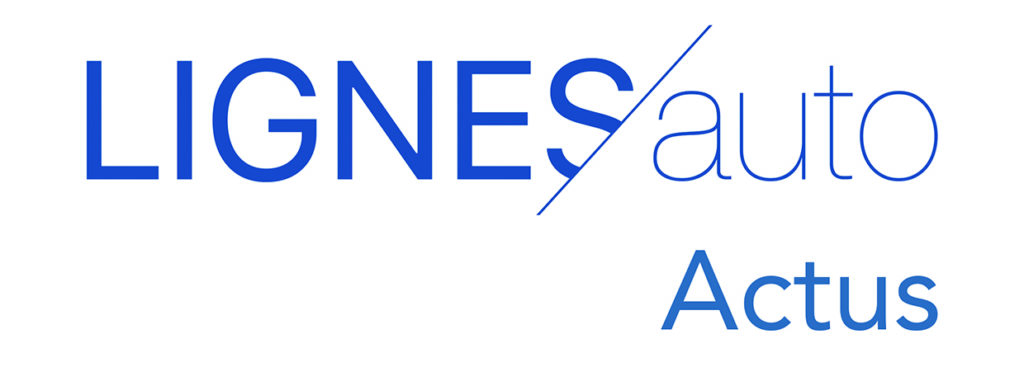
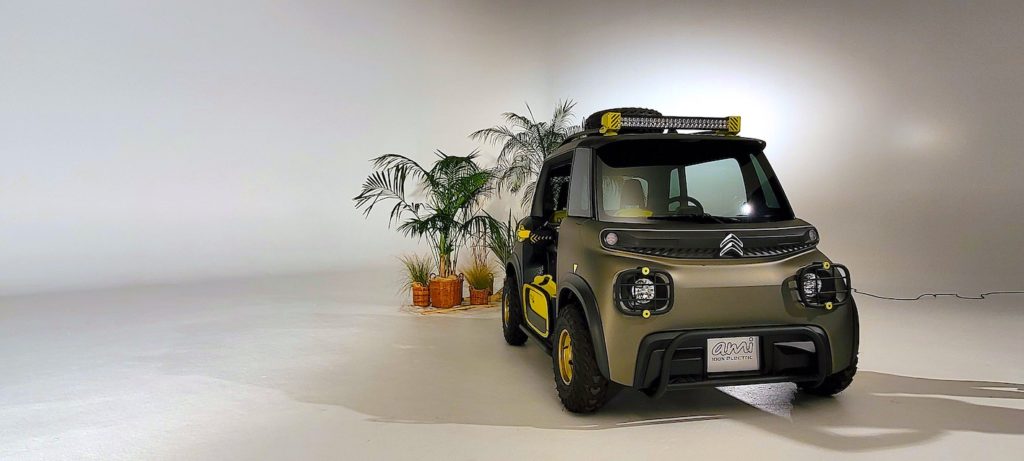
Here is a small, invigorating machine that is as fresh as a summer breeze. Citroën takes the seasons in hand and plunges us into a timeless universe: that of the buggy! And it’s the little electric Ami that serves as the basis.

Samuel Pericles (below with Hélène Veilleux at the wheel) is a designer in the small Prolab Style unit at Citroën. This is not a transversal entity, since each Stellantis brand has its own ‘prolab’. The My Ami Buggy concept was largely born here. Samuel explains, “This is a department where we focus more on product design and probably a little less on purely automotive design. Depending on the period, there are between 5 and 6 people here.

Remember, if you are a loyal reader – http://lignesauto.fr/?p=23348 – Pierre Leclercq (Citroën’s design director) told us in our recent interview that he had hired an Indian product designer and she is part of this small unit.
VIDEO BELOW
Samuel Pericles, on the design side, worked on this little Buggy concept based on the Ami with the teams of Hélène Veilleux on colours and trims. And make no mistake, this is not just a fantasy on the most fanciful of Citroën cars. “It’s really a little research lab”, says Samuel. “We started with the Ami, which has been a great success, and derived this Buggy from it, while keeping customisation as the main theme of the study. We wanted to push this customisation to the extreme, and adopt a very specific colour and material treatment, to end up with an object that is completely different from the production model.”
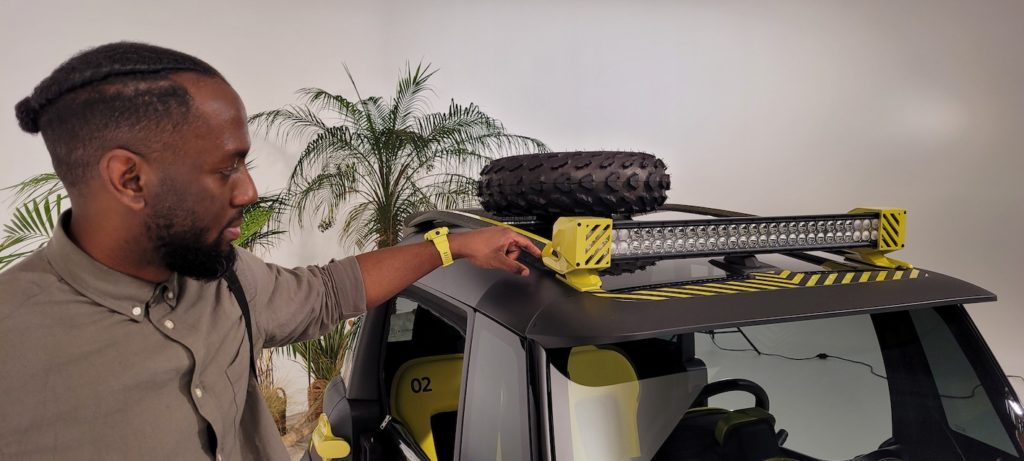
The light bar on the roof comes from a department store where you can find everything, even what you need to equip a concept! Note the spare wheel on the roof.
And this “lab” part notably affects the customisation accessories processed by 3D printing. Because the Ami has no doors (we’ll come back to this below), it leaves a few holes in the door rabbets, which are intended on the production version to integrate the door closing or hinge systems. In these empty spaces, the designers have provided accessory parts made entirely by 3D printing. At the front, for example, there is an original mirror support. “It is clipped into the housing by means of a mechanism integrated into the shape.
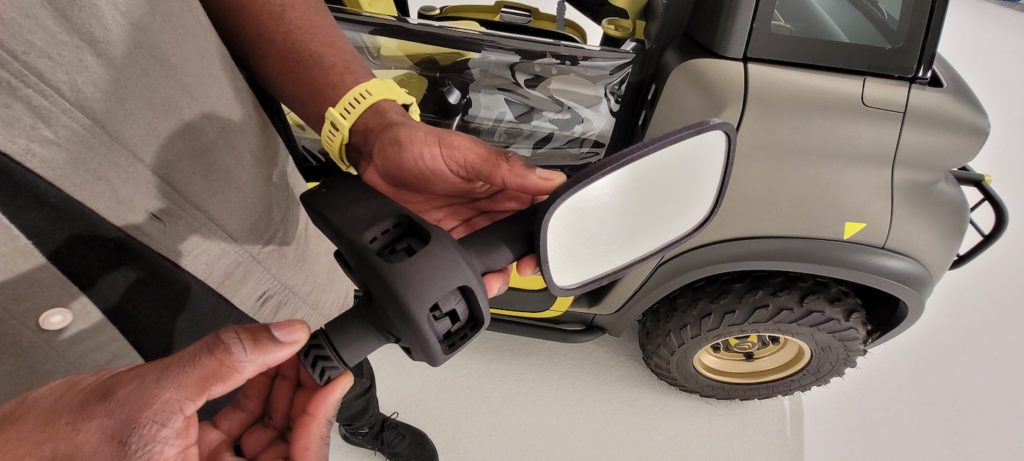
“We use the elasticity of the material to enable this functionality. The support is made in one piece using 3D printing (apart from the mirror, of course…) and therefore integrates the mechanism for adjusting the mirror. When designing this part, spaces of 2 to 3 tenths of a millimetre were provided for the powder to flow out after the printing bath. This frees up the mechanism, makes it functional, and you even have the adjustment ball joint integrated! It’s super fun to design!”

A good powder bath to print this part is surprising! “All this is done in-house and we can even imagine that once the part has been digitally designed, the customer can print it at home!” And to think that I’m having trouble with my scan… Another accessory is clipped onto the rear door rabbet and can hold a camera (below) to bring back memories of your ride. “With these parts, we’re talking about real product design”.
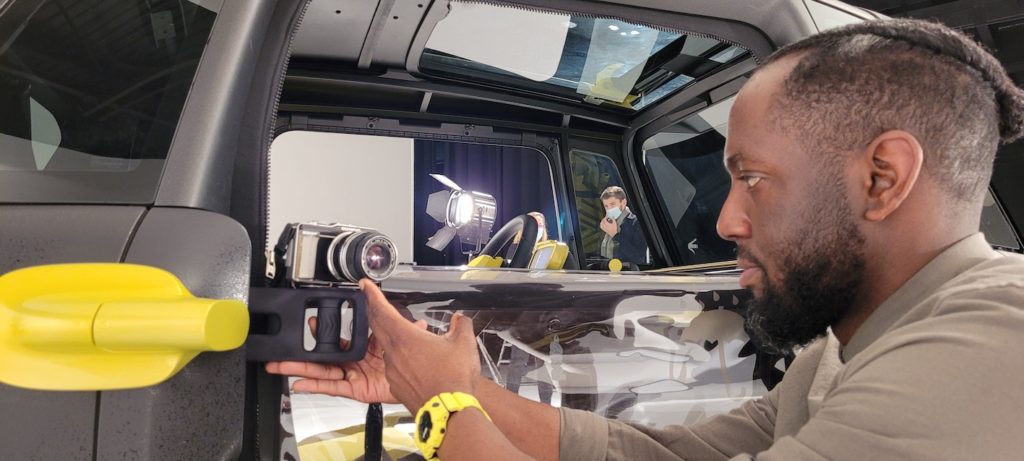
Find our quarterlies (130 page books) dedicated to automotive design on https://lignesautoeditions.fr
The Ami Buggy no longer has doors, just small gates, and has pumped up its biceps – or rather its wheels – to show off a lot on the beach. The doors are designed to match the design and location of the ‘graphic capsules’ on the production car. They incorporate a dedicated (waterproof) luggage in Citric Yellow, a colour found inside with a host of accessories. The seats are more comfortable than those of the Ami (7 cm thicker) and we could well imagine a comfort pack in the future for the standard Ami. This little lab is great because it retains the DNA of the parent car: intelligent design to minimise the price while improving certain features.

It will be easier to find the front and rear of your Ami thanks to a specific body colour treatment. Hélène Veilleux and her team have kept the khaki colour for the front, but have worked this colour up to a pearl black on the rear part (a textured finish called Speckled Black). “This accentuates the vehicle’s face,” says Samuel with amusement. The roof bars (or should I say the roof bar, because it’s the same one that’s doubled up, economy, economy…) are covered with a speckled paint, inspired by those found on sneakers today, “it brings a sporty and young side to the car” in addition to its outdoor look! Since its launch, 13,000 units of the Ami have been sold in Europe. It deserved to be further emancipated by Citroën!

ARE YOU PASSIONATE ABOUT DESIGN? Discover what goes on behind the scenes with designer Patrick le Quément’s account of his first 20 years as a designer, and the sometimes tense relationships at the heart of the Simca, Ford and Volkswagen design offices, from 1968 to 1989: below

